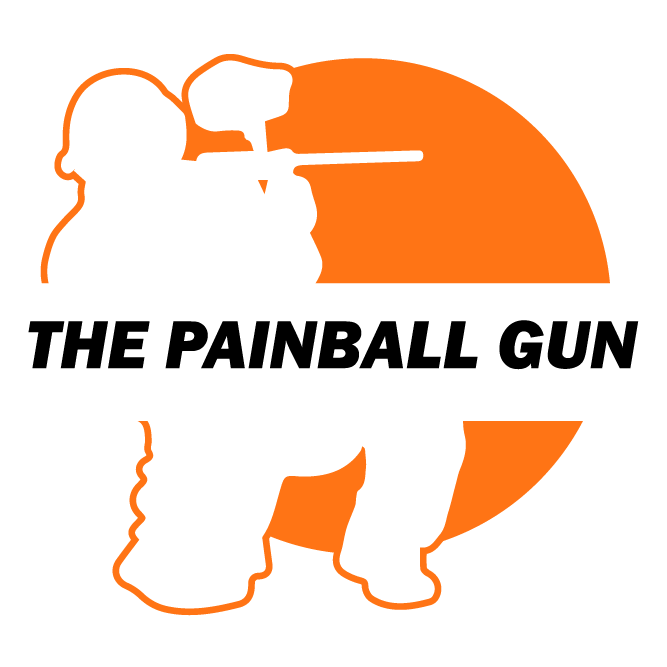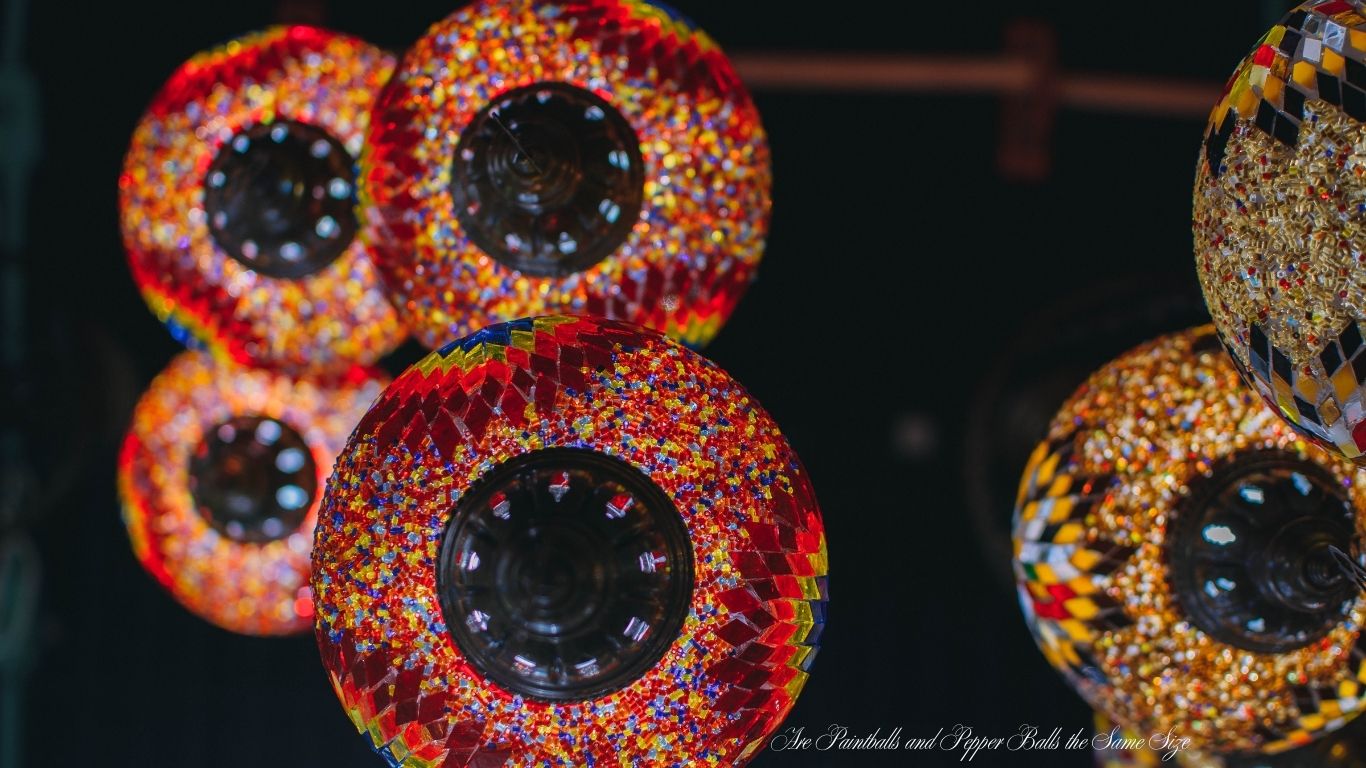Whether you’re a paintball enthusiast or someone interested in self-defense tools, the question of whether paintballs and pepper balls are the same size often arises. At first glance, both projectiles might appear similar in size, but when we look deeper, the differences in their design, purpose, and functionality become evident. This article will explore whether these two projectiles are indeed the same size, why size matters, and how their design impacts their effectiveness in various situations. By the end, you’ll have a comprehensive understanding of these two projectiles and their distinctive roles in paintball sports and self-defense scenarios.
Understanding the Basics: What Are Paintballs and Pepper Balls?
Before we dive into their size, it’s crucial to understand what paintballs and pepper balls are designed for and how they are constructed.
Paintballs
Paintballs are spherical projectiles primarily used in the recreational sport of paintball. They are typically made of a gelatin shell filled with a water-soluble dye. The purpose of the paintball is to mark an opponent with color when it breaks upon impact. Paintballs are carefully designed to break easily, ensuring the game remains fun and safe for participants. Their design aims for minimal pain upon impact, with most of the force being absorbed by the soft gelatin shell.
Pepper Balls
Pepper balls, on the other hand, are used in law enforcement and self-defense. These projectiles contain a chemical irritant, often OC (oleoresin capsicum), commonly known as pepper spray. The outer shell of a pepper ball is made of a harder plastic or polymer material compared to paintballs, ensuring the integrity of the ball until it impacts the target. Upon impact, the ball bursts open, releasing a cloud of pepper spray, which causes intense irritation to the eyes, respiratory system, and skin. Unlike paintballs, the purpose of pepper balls is not to mark a target but to incapacitate or deter an individual.
Are Paintballs and Pepper Balls the Same Size?
The simple answer to this question is yes and no. While the most common paintballs and pepper balls share similar sizes, with both being approximately 0.68 inches in diameter, this similarity is more coincidental than intentional. Here’s why:
Size Comparison:
-
Paintballs: The standard size for paintballs used in recreational paintball games is about 0.68 inches in diameter. This size is ideal for the sport because it allows for accurate firing from the paintball guns, ensuring proper range and accuracy.
-
Pepper Balls: Pepper balls are also typically 0.68 inches in diameter. However, they are designed with a different purpose in mind—self-defense or crowd control. The size is convenient because it fits in the same launching mechanisms as paintballs, making it easier for law enforcement or security personnel to use similar equipment for different types of projectiles.
Why Does Size Matter?
The size of the projectiles affects their flight pattern, range, and accuracy when fired from a paintball gun or a pepper ball launcher. Both types of balls are designed to be fired at a high velocity, but their contents and materials play a significant role in determining their overall effectiveness. Despite being the same size, the purpose of each ball—whether for recreational play or self-defense—dictates how they interact with their target and the environment.
The Design Differences: Why They Aren’t Just About Size
Although paintballs and pepper balls may look similar in size, the materials used in their construction are vastly different.
Paintball Construction
Paintballs are typically made of a soft gelatin shell filled with a brightly colored dye. The goal is to ensure that when the ball impacts a target, it bursts open and leaves a visible mark. The gelatin shell is designed to break easily, making it relatively safe for players to get hit during a game, although protective gear is still important to avoid injury.
Pepper Ball Construction
Pepper balls have a much tougher outer shell made of plastic or another durable material. Inside, they contain a chemical irritant, usually in the form of a pepper spray or powder. When a pepper ball hits its target, the shell breaks, releasing the irritant into the air, causing immediate discomfort, pain, and temporary incapacitation of the person hit. The difference in materials affects more than just durability. While paintballs are designed to break apart on impact, pepper balls need to maintain their integrity until they reach the target, ensuring the irritant is released effectively.
How Are Paintballs and Pepper Balls Fired?
Both paintballs and pepper balls are fired from similar types of launchers, but the mechanics of these devices differ slightly due to the nature of the projectiles.
Paintball Guns
Paintball guns, also known as markers, use compressed air or CO2 to launch paintballs at a high velocity. The design of the paintball gun ensures that the paintball remains intact until it strikes a target. The gun’s air pressure is calibrated to ensure the paintball breaks open upon impact, marking the target without causing too much injury.
Pepper Ball Launchers
Pepper ball launchers are similar to paintball guns but are specifically designed to fire pepper balls. These launchers tend to have slightly more robust mechanisms, as pepper balls are typically fired at a higher velocity to ensure they reach their intended target effectively. Additionally, pepper ball launchers often have features that allow for better control over the projectile’s trajectory, as the aim is to incapacitate rather than simply mark a target.
Purpose and Use: Recreational vs. Self-Defense
The most important distinction between paintballs and pepper balls lies in their intended purpose. While their size may be similar, the outcome when they are used differs dramatically.
Paintballs:
Paintballs are primarily used in recreational paintball games, where participants aim to “tag” opponents with the paintball. The objective is to eliminate opponents from the game by marking them with paint, creating a fun, competitive experience. Since the impact of a paintball is not intended to cause lasting harm, they are designed with safety in mind.
Pepper Balls:
Pepper balls, however, are designed for law enforcement or personal self-defense. When fired, they release a cloud of pepper spray, which can temporarily incapacitate an individual by causing intense irritation to the eyes, respiratory system, and skin. The goal is not to mark but to stop an individual from continuing an action, whether it’s in a crowd control situation or as part of a self-defense mechanism.
FAQs
1. Are paintballs and pepper balls the same size?
Yes, they are generally the same size, typically around 0.68 inches in diameter. However, the contents and intended use are different.
2. Can a paintball gun be used to fire pepper balls?
No, pepper balls require a special launcher designed to handle the tougher exterior and release the irritant effectively.
3. Which one is more painful: paintballs or pepper balls?
Pepper balls are more painful because they contain a chemical irritant, whereas paintballs primarily cause temporary discomfort.
4. Are pepper balls dangerous?
Yes, pepper balls can cause temporary blindness, respiratory distress, and intense pain. They are designed for self-defense or law enforcement use.
5. How do paintballs and pepper balls differ in their effects on a target?
Paintballs mark a target with a non-toxic dye, while pepper balls incapacitate the target with a chemical irritant, often used in crowd control or self-defense situations.
Conclusion
In conclusion, while paintballs and pepper balls may appear to be the same size—both typically measuring around 0.68 inches in diameter—the similarities largely end there. The design, materials, and intended purpose of these projectiles are vastly different. Paintballs are soft and designed for recreational use, while pepper balls are hard, filled with a chemical irritant, and are intended for self-defense and law enforcement. Understanding these key differences can help you make an informed decision, whether you’re gearing up for a paintball game or considering self-defense options.


Leave a Reply